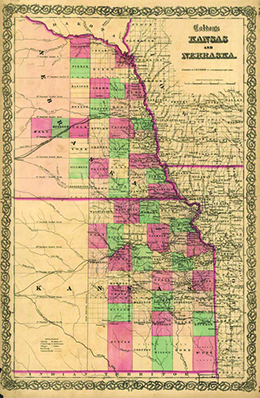| << Chapter < Page | Chapter >> Page > |
It is important to note that, even among those who opposed the expansion of slavery in the West, very different attitudes toward slavery existed. Some antislavery northerners wanted the West to be the best country for poor whites to go and seek opportunity. They did not want white workers to have to compete with slave labor, a contest that they believed demeaned white labor. Radical abolitionists, in contrast, envisioned the end of all slavery, and a society of equality between blacks and whites. Others opposed slavery in principle, but believed that the best approach was colonization; that is, settling freed slaves in a colony in Africa.
The growing political movement to address the issue of slavery stiffened the resolve of southern slaveholders to defend themselves and their society at all costs. Prohibiting slavery’s expansion, they argued, ran counter to basic American property rights. As abolitionists fanned the flames of antislavery sentiment, southerners solidified their defense of their enormous investment in human chattel. Across the country, people of all political stripes worried that the nation’s arguments would cause irreparable rifts in the country ( [link] ).
![A cartoon titled “The Hurly-Burly Pot” depicts William Lloyd Garrison, David Wilmot, Horace Greeley, and John C. Calhoun standing over a large cauldron in fool’s caps. Into the cauldron, they place sacks labeled “Free Soil,” “Abolition,” and “Fourierism.” The cauldron already contains sacks labeled “Treason,” “Anti-Rent,” and “Blue Laws.” Wilmot says “Bubble, bubble, toil and trouble! / Boil, Free Soil, / The Union spoil; / Come grief and moan, / Peace be none. / Til we divided be!” Garrison says “Bubble, bubble, toil and trouble / Abolition / Our condition / Shall be altered by / Niggars strong as goats / Cut your master’s throats / Abolition boil! / We divide the spoil.” Greeley says “Bubble, buble [sic], toil and trouble! / Fourierism / War and schism / Till disunion come!” In the background, John Calhoun says, “For success to the whole mixture, we invoke our great patron Saint Benedict Arnold.” Benedict Arnold rises from the flames beneath the pot, saying “Well done, good and faithful servants!”](/ocw/mirror/col11740/m50080/CNX_History_14_02_Cartoon.jpg)
As these different factions were agitating for the settlement of Kansas and Nebraska, leaders of the Democratic Party in 1853 and 1854 sought to bind their party together in the aftermath of intraparty fights over the distribution of patronage jobs. Illinois Democratic senator Stephen Douglas believed he had found a solution—the Kansas-Nebraska bill —that would promote party unity and also satisfy his colleagues from the South, who detested the Missouri Compromise line. In January 1854, Douglas introduced the bill ( [link] ). The act created two territories: Kansas, directly west of Missouri; and Nebraska, west of Iowa. The act also applied the principle of popular sovereignty, dictating that the people of these territories would decide for themselves whether to adopt slavery. In a concession crucial to many southerners, the proposed bill would also repeal the 36° 30' line from the Missouri Compromise. Douglas hoped his bill would increase his political capital and provide a step forward on his quest for the presidency. Douglas also wanted the territory organized in hopes of placing the eastern terminus of a transcontinental railroad in Chicago, rather than St. Louis or New Orleans.

After heated debates, Congress narrowly passed the Kansas-Nebraska Act. (In the House of Representatives, the bill passed by a mere three votes: 113 to 110.) This move had major political consequences. The Democrats divided along sectional lines as a result of the bill, and the Whig party, in decline in the early 1850s, found its political power slipping further. Most important, the Kansas-Nebraska Act gave rise to the Republican Party , a new political party that attracted northern Whigs, Democrats who shunned the Kansas-Nebraska Act, members of the Free-Soil Party, and assorted abolitionists. Indeed, with the formation of the Republican Party, the Free-Soil Party ceased to exist.

Notification Switch
Would you like to follow the 'U.s. history' conversation and receive update notifications?